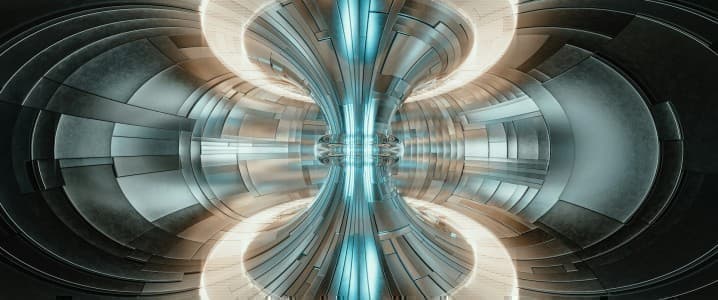
News
October 06, 2025
Can AI Solve the Nuclear Fusion Energy Puzzle?
Nuclear fusion could be the holy grail of clean energy if scientists can crack the code of maintaining and controlling plasma for more efficient reactions. Nuclear fusion could provide critical amounts of baseload power all while producing zero greenhouse gas emissions and zero hazardous nuclear waste...someday. We’re still a long way away from being able to create the conditions for nuclear fusion to take place on a scale that’s anywhere close to energy-efficient or commercially viable. But a series of breakthroughs in the past...
## Can AI Solve the Nuclear Fusion Energy Puzzle?
The quest for clean, limitless energy has led researchers to chase a seemingly impossible dream: nuclear fusion. Imagine a power source that mimics the sun, generating immense energy without greenhouse gases or long-lasting radioactive waste. That's the promise of nuclear fusion, and while it remains decades away, recent breakthroughs suggest artificial intelligence might be the key to unlocking its potential.
Nuclear fusion involves forcing atoms to combine, releasing enormous amounts of energy in the process. However, achieving this on Earth is incredibly difficult. Scientists need to create and control plasma, an ultra-hot, electrically charged gas, within a reactor. Maintaining stable plasma long enough for efficient fusion reactions is a monumental challenge, requiring precise control of temperature, density, and magnetic fields.
For years, researchers have struggled to optimize these parameters, relying on complex mathematical models and trial-and-error experiments. But the sheer complexity of plasma behavior makes it difficult for traditional methods to keep up. That's where AI comes in.
Recent advancements have seen researchers applying machine learning algorithms to analyze vast amounts of data from fusion experiments. These AI systems can identify subtle patterns and predict plasma instabilities that humans might miss. By learning from past experiments, AI can also suggest optimal control strategies for maintaining stable plasma and maximizing fusion reactions.
While these AI-driven breakthroughs are encouraging, they are just the first steps. Nuclear fusion still faces significant hurdles before becoming a viable energy source. Scientists need to develop more robust reactor designs, improve plasma confinement techniques, and find ways to extract energy more efficiently.
Nevertheless, the application of AI to nuclear fusion research represents a significant shift in approach. By leveraging the power of machine learning, researchers are gaining a deeper understanding of plasma physics and accelerating the development of fusion technology. The dream of clean, limitless energy may still be distant, but with AI as a powerful new tool, it's inching closer to reality.
The quest for clean, limitless energy has led researchers to chase a seemingly impossible dream: nuclear fusion. Imagine a power source that mimics the sun, generating immense energy without greenhouse gases or long-lasting radioactive waste. That's the promise of nuclear fusion, and while it remains decades away, recent breakthroughs suggest artificial intelligence might be the key to unlocking its potential.
Nuclear fusion involves forcing atoms to combine, releasing enormous amounts of energy in the process. However, achieving this on Earth is incredibly difficult. Scientists need to create and control plasma, an ultra-hot, electrically charged gas, within a reactor. Maintaining stable plasma long enough for efficient fusion reactions is a monumental challenge, requiring precise control of temperature, density, and magnetic fields.
For years, researchers have struggled to optimize these parameters, relying on complex mathematical models and trial-and-error experiments. But the sheer complexity of plasma behavior makes it difficult for traditional methods to keep up. That's where AI comes in.
Recent advancements have seen researchers applying machine learning algorithms to analyze vast amounts of data from fusion experiments. These AI systems can identify subtle patterns and predict plasma instabilities that humans might miss. By learning from past experiments, AI can also suggest optimal control strategies for maintaining stable plasma and maximizing fusion reactions.
While these AI-driven breakthroughs are encouraging, they are just the first steps. Nuclear fusion still faces significant hurdles before becoming a viable energy source. Scientists need to develop more robust reactor designs, improve plasma confinement techniques, and find ways to extract energy more efficiently.
Nevertheless, the application of AI to nuclear fusion research represents a significant shift in approach. By leveraging the power of machine learning, researchers are gaining a deeper understanding of plasma physics and accelerating the development of fusion technology. The dream of clean, limitless energy may still be distant, but with AI as a powerful new tool, it's inching closer to reality.
Category:
Business